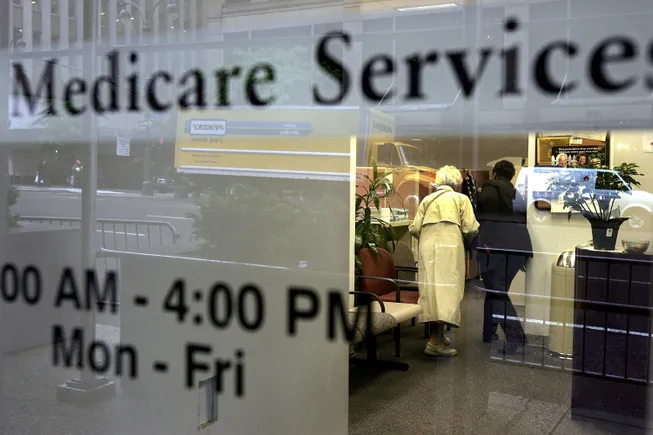Prescriptions of GLP-1RAs and SGLT2 inhibitors in type 1 diabetes patients rose from 2010 to 2023, especially among those with elevated cardiorenal risk.
 Study: GLP-1 Receptor Agonist and SGLT2 Inhibitor Prescribing in People With Type 1 Diabetes. Image Credit: Alones/Shutterstock.com
Study: GLP-1 Receptor Agonist and SGLT2 Inhibitor Prescribing in People With Type 1 Diabetes. Image Credit: Alones/Shutterstock.com
In a recent study published in JAMA Network Open, researchers from the United States of America (US) examined the prescribing trends for glucagon-like peptide-1 receptor agonists (GLP-1RAs) and sodium-glucose cotransporter 2 inhibitors (SGLT2i) in individuals with type 1 diabetes (T1D) from 2010 to 2023.
They found a significant increase in prescribing rates for both drug classes, with higher prescriptions for GLP-1RAs in patients with obesity and for SGLT2i in patients with cardiovascular and renal conditions.
Background
GLP-1RAs and SGLT2i are newer glucose-lowering drug classes that have been reported to offer significant cardiorenal benefits and weight management advantages. Although these drugs have not been approved for the management of T1D, there is evidence suggesting their current use in this population.
In the present study, researchers investigated the prescription trends of GLP-1RAs (albiglutide, dulaglutide, semaglutide, exenatide, liraglutide, lixisenatide, and tirzepatide) and SGLT2i (canagliflozin, empagliflozin, dapagliflozin, and ertugliflozin) in patients with T1D.
About the study
The present study utilized data from Epic Cosmos, a large electronic health record (EHR) database covering over 257 million US residents, to examine trends in prescribing GLP-1RAs and SGLT2i for individuals with T1D. A total of 405,019 were included in the broader T1D population.
The mean age of the overall T1D population was 41.5 years, 50.5% of the participants were men, and 70% were non-Hispanic White. Out of these, 18,725 individuals were newly prescribed GLP-1RAs, and 7,210 individuals were newly prescribed SGLT2i.
Patients with T1D were identified using a validated EHR-based algorithm. Patient characteristics (demographics, laboratory investigation values, complications, comorbidities) of the overall T1D population in 2023 were compared with patients who were newly prescribed GLP-1RAs or SGLT2i.
Prescription trends for these medications from 2010 to 2023 were analyzed across T1D subgroups with obesity, cardiovascular disease, and chronic kidney disease, as well as by specific GLP-1RA products.
Data extraction and analysis were performed, and statistical analysis involved using chi-square and Student’s t-tests. Owing to the use of deidentified data, the study was exempted from review by Emory University’s Institutional Review Board.
Results and discussion
From 2010 to 2023, the prescribing of GLP-1RAs and SGLT2i for individuals with T1D was found to increase significantly from 0.7% to 8.3%. The profiles of patients newly prescribed these medications were notably different from the broader T1D population. Individuals on SGLT2i had higher rates of cardiovascular issues (e.g., heart failure: 16.6% vs. 2.8%) and kidney disease (26.9% vs. 15.9%), while those prescribed GLP-1RAs showed a higher prevalence of obesity (69.4% vs. 45.7%).
The most prominent growth in the GLP-1RA category came from prescribing semaglutide, which increased from 0.2% in 2018 to 4.4% in 2023, and tripeptide, approved in 2022, which reached 1.3% in its first year. SGLT2i use was found to increase particularly in T1D patients with cardiovascular disease, while GLP-1RAs were found to be more commonly used among those with obesity.
The findings highlight a growing off-label use of these drugs, possibly to manage additional health risks in T1D patients. While the study is strengthened by its use of large-scale data, the findings are limited by a lack of data on the reasons for prescribing these drugs, the potential bias from health system variations, potential misclassification of T1D patients, and limited generalizability beyond one EHR database.
Conclusion
In conclusion, the study suggests that the prescription of GLP-1RAs and SGLT2i in people with T1D increased from 2010 to 2023, particularly among those with higher cardiorenal risk profiles. Despite their benefits in weight management and cardiorenal health, these medications are not approved for T1D due to risks like euglycemic diabetic ketoacidosis and concerns about significant weight loss.
Further research is needed to evaluate the safety and efficacy of these treatments in the T1D population, so the researchers have advised physicians to exercise caution when prescribing GLP-1RAs and SGLT2i to patients with T1D.
Journal reference:
- Li P, Li Z, Staton E, et al. GLP-1 Receptor Agonist and SGLT2 Inhibitor Prescribing in People With Type 1 Diabetes. JAMA. doi: 10.1001/jama.2024.18581 https://jamanetwork.com/journals/jama/fullarticle/2825312

 8 hours ago
1
8 hours ago
1















.png)

.png)
.png)
.png)













 English (US) ·
English (US) ·  Hindi (IN) ·
Hindi (IN) ·